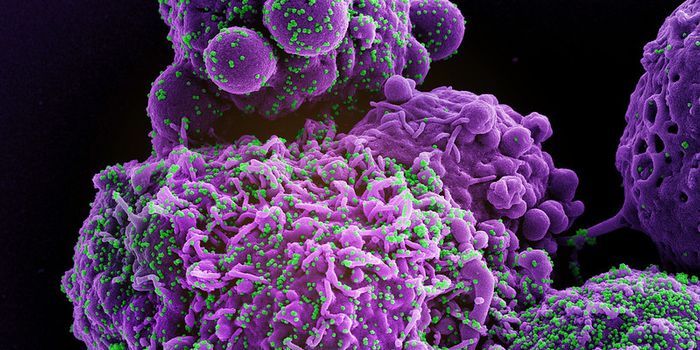To stop an aggressive, lethal killer known as pancreatic cancer, scientists have devised a way to deliver a toxic chemo cocktail straight to the cancer base. This new delivery mechanism obliterates pancreatic cancer cells, but spares other cells in the body.
Pancreatic cancer has one of the worst mortality rates of all cancer types, largely because the cancer spreads rapidly and is seldom detected in its early stages. While surgery to remove the diseased tissue is the most effective treatment against pancreatic cancer, doctors can only operate in about 15% of the time. Consequently, once diagnosed, only one in four patients survive past the one-year mark.
Recent research has shown success with a new combination chemotherapy regimen, known as
FOLFIRINOX. Combining four potent cancer drugs in one (folinic acid, fluorouracil, irinotecan, and oxaliplatin), FOLFIRINOX extends patient survival by an additional four months, the longest improvement in survival in patients with advanced pancreatic cancer. But FOLFIRINOX is so toxic when given intravenously that very few patients can tolerate this chemotherapy.
Researchers at the University of North Carolina (UNC) at Chapel Hill hoped to extract the full utility of FOLFIRINOX by targeting it only to the diseased pancreas. To do this, they developed an “iontophoretic device” that was implanted directly onto pancreatic tumors in mice. The device uses electric currents to diffuse the drugs directly into the pancreas, sparing other tissues and organs in the body and reducing collateral damages of the drugs.
"It's an exciting approach because there is so little systemic toxicity that it leaves room to administer additional drugs against cancer cells that may have spread in the rest of the body. – Jen Jen Yeh, senior study lead, and associate professor of surgery and pharmacology in the UNC School of Medicine.
Compared to intravenous delivery of FOLFIRINOX, localized iontophoretic delivery was much more effective at reducing tumor growth in a mouse model. Tumor cell proliferation also decreased significantly.
The authors attribute the improvements to the ability of the iontophoretic device to deliver much higher concentrations of drug straight to the tumor base itself. Though the experiments were done in mice, the researchers hope to soon extend the treatments to patients whose tumors are inoperable.
“If this works in humans, we hope the device can be used as a plug-and-play approach to delivering the latest, most promising drug regimens for patients who have a dire need for new and better treatments,” says James D. Byrne, first author of the paper.
The study was published in the
Proceedings of the National Academy of Sciences on February 8, 2016.
Additional source:
MNT


















































